Baganda People and their Culture in Uganda
Who are the Baganda People in Uganda? Buganda kingdom is the largest of the traditional kingdoms in present-day Uganda, comprising all of Uganda’s Central Region.
The Baganda had a centralized system of government which by 1750 was the best organized in the interlacustrine region/
Location of Baganda People:
The Ganda are the largest of 43 ethnic groups living in Uganda. Their traditional land is located in a crescent-shaped are west, northwest and north ofLake Victoria in the districts of Rakai, Masaka, Kalanga, Mpigi, Mubende, Luweero, Kampala, and Mukono.
Every town in Uganda has its complement of Ganda involved in government service, trading, manufacturing, or other economic opportunities.
History of Baganda People:
The Ganda people trace their royal line back 250 years. They are a part of the Bantu people which originated in central Africa and migrated into Uganda as early as 1000 AD.
By the time of European exploration in 1858, they had evolved a complex system of central government including an appellate court system, taxation and customs regulations, and a standing army.
They served as the primary agents of the British protectorate and were used to subdue and administer the central and eastern regions of Uganda.
Identity of Baganda People:
The Ganda are sometimes also called Baganda from their grammatical from of the name meaning "The Ganda People." They are one of the Bantu peoples and have dark skin, curly hair, and prominent facial features. They are generally shorter than the Lwo and other Nilotes.
The Ganda are the most urbanized of all tribes of Uganda, comprising over 50% of the population of the greater Kampala area. Almost half of the Ganda over ten years old are illiterate, and only about 10% have any post-primary education. They are primarily agricultural, with small segments of the population involved in fishing, trading, and light industry.
Language of Baganda People:
The language of the Ganda people is popularly called by the Ganda word Luganda (meaning simply "Language of the Ganda People"). It is the primary trade language across the eastern, central and southern regions of Uganda. The Ganda language was first written down by European missionaries, and follows a pronunciation pattern similar to Italian.
Like most tribal languages in Uganda, Luganda has not kept pace with the introduction of world culture or technology. Since education of children over 10 years old takes place strictly in English, technical and professional vocabulary is most commonly expressed in English. The Ganda themselves emphasize the value of their linguistic heritage, promulgating cultural activities and media in Luganda.
Political Situation of Baganda People:
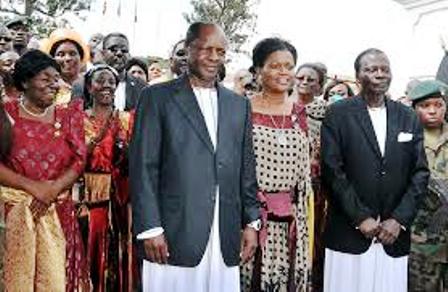 Kabaka Muwenda Muteebi , The King of Baganda Tribe
Kabaka Muwenda Muteebi , The King of Baganda TribeThe Ganda were key administrative personnel in the colonial administration, and they are distrusted by their countrymen of other tribes.
Their prerogatives were enshrined by the British in the first post-colonial constitution, and that is seen to have contributed to the beginning of the instability of the country as a whole.
They continue to ask the government for separate status, and have reorganized their own legislature after the government acceded to recognize their king as a cultural leader.
Because of their numbers and economic influence, no person can rule Uganda peacefully without the cooperation of their leaders. The name of Uganda is the Swahili form meaning "land of the Ganda people."
Customs of Baganda People:
The Ganda culture continues to thrive in the villages. There is great respect for the male head of household, and members of the home must kneel as they speak to him.
All children may share work equally while young. As they mature, the men take on responsibility outside the home while the women focus on the garden and domestic responsibilities.
They have a strong belief in the spirit world and frequently consult traditional healers, diviners or witch doctors for solutions to the problems of their lives.
The village economic system is dominated by the Kabaka (King) and his chiefs through land allocation. With the re-installation of their Kabaka as their cultural leader, they have revived their traditional holidays and celebrate the great events of their people's history.
Religion of Baganda People:
The Ganda were the tribe most heavily influenced by the introduction of Anglicanism (Church Missionary Society, 1877), Catholicism (Catholic White Fathers 1879), and Islam by explorers, missionaries and traders.
This heritage of religion is deceptive. Many people see Christian and traditional rituals as equally valuable sources of spiritual power.
They observe the rituals of their religion scrupulously, alongside their equally careful practice of the rituals of their traditional beliefs. Many purchase and use the traditional charms to protect their homes, children and gardens from curses.
When problems come, the final appeal is most often made to the spirits of the ancestors through the services of a witch doctor, diviner or traditional healer. About 20 percent of the Ganda are Muslim. Islam was introduced by Swahili and Arab traders in the late 1800s.
Christianity of Baganda People:
By 1886, the introduction of new beliefs had divided the political and cultural environment in the royal enclosure at Mengo. Sensing his erosion of power, Kabaka Mwanga on 3 June 1886 ordered the execution by torture and immolation of 22 of his servants who refused to renounce their faith.
The witness of these martyrs resulted in many new converts, political turmoil and the final ascendancy into temporal prominence of the leaders of the Anglican and Catholic communities.
Unfortunately, this temporal acceptance led the syncretism of these beliefs with the traditional rituals of the local cultures. Even today, the new Kabaka is honored at coronation by representatives from both churches, who participate in a ceremony that is replete with traditional power rituals and totems.
The East African Revival had great influence on the Ganda. During those years, many Ganda came to a saving knowledge of Jesus. Unfortunately, their heritage was not preserved. The word balokole, meaning “saved one,” can be heard in almost every village, yet it has become simply a term of reference. The "balokole" are legalistic and believe that by sinning they fall from saving grace.
Today, the responsiveness of the Ganda to spiritual issues can be seen by the large crowds that gather for witchcraft demonstrations, religious ceremonies, and evangelical crusade events. People readily believe in God, having been taught from childhood the reality of the spirit world. Evangelical members of the traditional churches profess a personal relationship with Jesus Christ.
The Baganda people traditional marriage (Kwanjula)
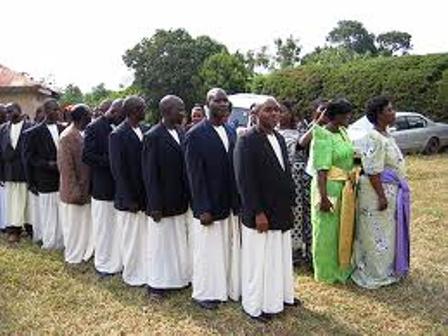 The Baganda people traditional marriage (Kwanjula)
The Baganda people traditional marriage (Kwanjula)The traditional marriage or give away ceremony in Buganda is one function you will get to like because it keeps you on your toes.
The preparations for any traditional introduction or marriage ceremony are tiring and trying financially, physically and mentally as you wonder why you have to fulfill a lot of traditional must do requirements and spend so unreasonably because 'tradition' requires it so.
But from the day the ceremony is held, you will like it for the rest of your life because of the cultural and organized displays as well as the value that many people continue to attach to this ceremony called Kwanjula.
Kwanjula basically means to introduce. It is a day when the bride to be introduces her future husband (and his people who escort him) to her parents and relatives.
I have attended many introduction ceremonies but the Baganda's Kwanjula is a more elaborate and engaging ceremony that what you have to do right keeps you on your toes until the last minute of the ceremony, or you may miss being given the lady of your life.At the beginning, you have to go and see one of the lady's aunties(Ssenga), the one she has chosen to act as Ssenga - the official aunt.
The Ssenga is very central to the Kiganda marriage ceremony and is a respected role that many ageing Baganda women yearn to perform. You are required to write a letter to the lady's family, the bazeyi or elders.
The letter has to be in flawless Luganda and has to be written through the Ssenga or aunt who thenceforth becomes the official go between the two parties. The letter is then taken to the Ssenga (with a little money for transport of course) to take it to the Bakulu Bano (fellow respected elders).
In the letter, the man is asking to be allowed to get born in his in-laws family by going there to ask for their daughter's hand in marriage.The Bakulu then accept in writing that you can go on a specified date and 'get born into their family'.
They also gave you the maximum number of people you should take which is most times not more than 50 people. The father in-law will also ask for his Mutwalo, what could be taken as bride price.
The mutwalo is accompanied with some items that you will need to take along for example: fruits and vegetables except egg plants (Ntula and Biringanya) and a few others, which if taken would be considered as cultural taboo that may lead to the man being fined or denied the bride altogether.
There has to be bread, sugar, salt, soap, paraffin, cooking oil, curry powder, and a host of related items. You are required to buy certificates from Buganda kingdom to show that you respect and support the cultural monarchy, one of the four certificates being the marriage certificate.
The Kanzus for the Father in-laws and brother in-laws, Gomesis for mother in-laws and Ssengas (Kanzu and Gomesi are cultural dresses for males and females respectively). These are a must. You have to prepare money for the envelopes- for the father in-law, mother in-law, Ssengas, brother in-laws (with a special one and a cock for the official brother in-law).
The traditional marriage ceremony in Buganda may have changed over the years, but it still remains a battle of wits and cultural tongue-twisting between representatives of the two sides who engage each other in a question and answer challenge or in knowing, mentioning and following century old norms and traditions.
Both families are required to have a spokesman to speak for them. The spokesman takes the role of the final emissary on the day of introduction and he has to pull a lot of antics learned from tradition and experience to engage or answer challenges from the other side's spokesman.
It is the battle (friendly and of words) between the two that makes the Kwanjula and the whole ceremony memorable and unique from any other ceremony.The spokesman takes the role of the final emissary on the day of introduction and he has to pull a lot of antics learned from tradition and experience to engage or answer challenges from the other side's spokesman.
It is the battle (friendly and of words) between the two that makes the Kwanjula and the whole ceremony memorable and unique from any other ceremony. The spokesman will range between 250,000- 300,000 but the price is negotiable.
The dressing is also another crucial aspect on this day. The men are supposed to wear coats and kanzus while the women will need to put on gomesi preferably but this also depends on what culture the intended son-in-law comes from.
The greetings then begin starting with the girls of the house who also welcome the visitors followed by the boys and then the sengas.
Since the senga is the most important person on this day next to the bride to be, she actually runs the whole function from introducing the guests to choosing the bridegroom.
When the bridegroom is chosen, the mugole can then come out of the house and greet her visitors most especially the bridegroom. This is the beginning of a new family to the bridegroom since he has been inaugurated or allowed into his mugole’s family.
The rest of the ceremony is as interesting as the gifts (which are left outside) are brought and allocated to the different beneficiaries and the hosts lay their demands and wishes on the new family.
Once the gifts are brought, the host's spokesman asks the bride and Ssenga "Ebintu Tubirye?" -whether they should accept the gifts. When they accept, the part of the rings follows were the bridegroom puts a ring on the brides finger this in kwanjula denotes marriage, and then the cutting of the cake follows and that brings us to the end of a memorable day.
History of Buganda Kingdom
The region known today as Buganda was known as Muwaawa before the 12th century, a name literary seem to mean a place that is sparsely populated. It is believed that these people come from Abyssinia through the rift valley and the mountains of Elgon.
These people were organized into groups that had a common ancestry and constituted the most important unit in Buganda’s culture – the clan.
The leader of each of these clans would be a chief and ruled a section of the territory. There were five original clans referred to as Banansangwa simply meaning the indigenous clans and they are: Ffumbe, Lugave, N?onge, Njaza and Nyonyi. These went on expanding to 52 clans by 1966.
There was no accepted general leader in the region but leadership passed on to whoever proved his might in the battle field. There used to be more than one leader in the same area.
Muwaawa become Buganda during the reign of Ssekabaka Kintu the first when he took over from Bemba. By this time, the head of the Ffumbe clan was called Buganda Ntege Walusimbi who had leadership over other clans.
Walusimbi had several children including Makubuya, Kisitu, Wasswa Winyi, and Kato Kintu. When Walusimbi died, his son Makubuya replaced him as ruler. On his death, Makubuya in turn was replaced by his brother Kisitu as ruler.
During Kisitu’s reign, a renegade prince called Bbemba came from the area of Kiziba in northern Tanzania today and established his camp at Naggalabi, Buddo from there he planned to fight Kisitu and replace him as ruler of Muwaawa. Bemba became so cruel and ruthless.
When Bbemba attacked Kisitu, Kisitu became so intimidated and in his fear, he vowed to give his chair Ssemagulu to whoever would succeed in killing off Bemba whereby Ssemagulu was the symbol of authority. On hearing his brother’s vow, Kintu gathered some followers from among his brothers and some of the various clans and attacked Bemba.
Bemba was defeated in the ensuing battle and he was beheaded by one Nfudu of the Lugave clan. Nfudu quickly took Bbemba’s head to Kintu, who in turn took it to Kisitu. On seeing Bbemba’s head, Kisitu abdicated his throne in favor of Kintu with the words that “Kingship is earned in battle”.
Despite his abdication, Kisitu wanted to retain leadership of the Ffumbe clan, so he told Kintu to start his own clan. He also told Kintu that the kingdom should be renamed Buganda in memory of their common ancestor Buganda Ntege Walusimbi. Thus the royal clan came into existence by separated from the Ffumbe clan.
Kintu established a new system of governance in alliance with the other clan leaders. Although there is no written literature, the information has passed on from generation to generation in oral form and the above version has been widely accepted as the most viable version.
However, there are other versions that talk about the origin of Buganda and amongst them is one where people believed that Bbemba and Kintu were related and that Kintu who was younger than Bbemba took over as leader.
This did not go down well with Bbemba who was eldest which forced him to fight his cousin Kintu from the throne. Bbemba won the battle and Kintu ran away to the Ssese Islands from where he organized to come back and fight for his throne which was by then called Naggalabi.
When Bbemba took over power, he became so ruthless that people hated him so much. They even compared him to the dangerous cobra (Bbemba Musota) and wherever he would go to visit, he caused suffering to the people and even killed many of them.
People became furious of him and when Kintu came back to fight him, all the people rallied behind him to fight Bbemba and this helped Kintu to win the battle.
This version goes a head to say that Kintu teamed up with all the different clans and his army was led by Mukiibi who was leader of the Lugave clan in the area.
They won the battle and Bbemba was chased away. Kintu Kato took over the throne and its from here that some people mistake Kintu Kato as the first Muganda but this is not true.
Kintu Kato could not have been the first Muganda when he fought Bbemba to take over power. He was a grandson to the first Kintu who came straight from heaven and he was married to Nambi Nantululu.
When Kintu was coming back from Ssese Island, he took around about route via mountain Elgon. This he did because he wanted to take cover from his enemies so that he could attack Bbemba’s men with ease.
This is the reason why some people mistake Kintu to have come from the east of the country known today as Uganda. Kintu came to Buganda as a conquering hero with a big force that enabled him to establish himself as king. It’s also believed that Bemba was a harsh and ruthless ruler.
His subjects were already primed to rebel against him and indeed some prominent clan leaders joined Kintu’s invading force.
Key among these was Mukiibi, head of the Lugave clan, who was assigned command of the invading force. When Bemba was defeated in the battle, Kintu slept in Bemba’s house as a sign of his victory. Bbemba had named his house Buganda and was located at Naggalabi Buddo.
Thus Kintu took over leadership of Bemba’s house Buganda and the name eventually came to mean all the territory that Kintu ruled. To this day, when a new king of Buganda is crowned, the ceremony takes place at Naggalabi, to recall Kintu’s victory over Bemba.
Kintu found the region disorganized with only five clans. He reoganised them and merged those people he came with and the people he found in the region. Together they formed thirteen clans, organized themselves and formed the Buganda Kingdom.
The five clans Kintu found in the region included among the following Ffumbe clan, Lugave clan, Ngeye clan, Nyonyi Nyange clan and the Njaza clan and they are referred to as “Ebika Binansangwa”.
Kitnu organized the people and called for a general meeting for all the clan leaders who met at Magonga in Busujju on Nnono hill and formed a united government with Kintu as their leader.
This meeting was of great historic significance for it was at this meeting that Buganda’s form of governance, and the relationship between the clans and the King was formally agreed upon.
The agreement was not written down but it constituted an understanding between the clans that has been followed since then. In essence it set down Buganda’s Constitution.
After the meeting, Bukulu returned to the Ssese Islands. On completing his victory, Kintu established his palace at Nnono. It is here that he appointed his first government and awarded chieftaincies to his prominent followers. For this reason, Nnono is one of the most important cultural and historical sites in Buganda.
A Fetich doctor (Omulubaale) who was keeping the Naggalabi which was the traditional name for throne gave one stick (Akati Kamu) to Kintu and told him to break it into pieces which Kintu did at once.
Then the Fetich put together nine sticks to make a bundle (Kaganda) and even prepared more others to make many bundles (Buganda) and told Kintu to break then like he had done with the one stick.
Kintu failed to break the bundles with ease as it had been with one stick and therefore the Mulubaale explained to him that it was very easy to break one stick but it was very difficult to break the bundles (Obuganda) and that he should rule his people in BUGANDA and not in single STICKS.
Therefore, it’s from here that the name Buganda was adopted and Muwaawa dropped. Every one would refer to Kintu’s region of rule as “Obuganda Bwa Kintu”.
When the kingdom was formed and given the name Buganda, the people in the Kingdom also became to be called Baganda for many and Muganda for Singular, their language Luganda and their culture Kiganda. They loved one another, spoke the same language and were never jealousy of each other.
Other theories state that Rukidi’s brother Kato was called Kimera rather than Kintu. According to this school of thought, Kintu was merely a mythical figure and Kimera is the one who established the royal dynasty of Buganda.
The Baganda strenuously resist this theory, and instead assert that Kimera was a grandson of Kintu. Kimera is counted as the third king in the dynasty, rather than its founder. More will be said about Kimera later
Cultural Set Up of the Kingdom
The leader of the Kingdom is called The Kabaka, the people are referred to as Baganda for many and Muganda for singular, their language is called Luganda and the Culture is called Kiganda Culture. The living king is called the Kabaka while the deceased king is referred to as the Ssekabaka.
Sovereignty of leadership has always belonged to the male child from the royal family. Neither woman nor any other person not from the royal blood can reign in Buganda. The elder son of the King in Buganda does not become king but takes on the title of Kiweewa and there are functions carried out to crown the Kiweewa.
The heir to the throne is always under the guardianship of the Kasujju. The Kasujju is also responsible for helping the Kiweewa carry out his duties. There is always a senior prince in the Kingdom called the Sabalangira. Princes and princesses take up their mothers clans and totems.
The queen and the queen mother are permitted to hold their courts and a certain measure of administrative powers is conferred on them by the Kiganda Custom. Princes in the direct linage of succession are called Princes of the Drum because their father is on the throne and has the royal drum (Mujaguzo).
Possession of this drum has always been regarded as possession of power, office and authority. Apart from the Royal drum (Mujaguzo), there are also other drums for each chieftainship. Each office is identified by the rhythm of its drum.
The kingdom also relied on the Bafumu who were appointed by the King. The Sabafumu would help to predict and warn the King about the coming problem and would go ahead to provide the King with people who could solve the problem.
The kingdom also relied on the work of the royal sister. She would help and guide the King when he takes over power. She is also traditionally called the œLubuga of the king.
She was appointed by the elders who were also responsible for the selection of the next king from amongst the sons of the outgoing king. The Royal sister would stress her advice to the King so that he takes her word seriously.
This is traditionally called Okuvuma Kabaka in Buganda. She also had an assistant called the Nampakibeezi who would help by doing her duties when she was away.
The King’s Twin (Mulongo) was also very useful in guiding the King on special powers claiming to come from god. The Twin had special powers called Lukenge. He was some times called the Mukasa wezadde. Thats why the Baganda say Bweza Bwa Mukasa when twins are born.
Every king in Buganda had to have a Jjembe which would make the King a hero by helping him win all the battles that came his way. The King would choose a name for his Jjembe.
The Home, like in most African culture, for one to become a man, he has to build himself a home and marry a wife. The King can build his home and give it a name of his choice.
People in Buganda are organized under different clans and are identified according to their respective clans. Children in Buganda are given names depending on their respective clans.
More about Afican Culture
Kenya Culture | Akamba | British Colonialists | Crafts | Cultural Business Meetings | Cultural Communication | Cultural Eye Contact | Cultural Gestures | Gift Giving | Cultural Law | Cultural Music | Cultural Space | Cultural Time | How to Talk in Kenya |
Recent Articles
-
Garam Masala Appetizers ,How to Make Garam Masala,Kenya Cuisines
Sep 21, 14 03:38 PM
Garam Masala Appetizers are originally Indian food but of recent, many Kenyans use it. Therefore, on this site, we will guide you on how to make it easily. -
The Details of the Baruuli-Banyara People and their Culture in Uganda
Sep 03, 14 12:32 AM
The Baruuli-Banyala are a people of Central Uganda who generally live near the Nile River-Lake Kyoga basin. -
Guide to Nubi People and their Culture in Kenya and Uganda
Sep 03, 14 12:24 AM
The Nubians consist of seven non-Arab Muslim tribes which originated in the Nubia region, an area between Aswan in southern
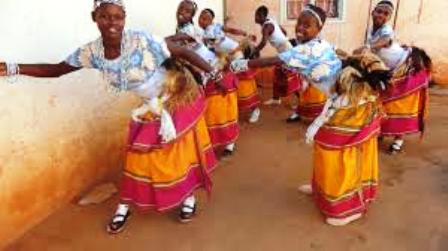
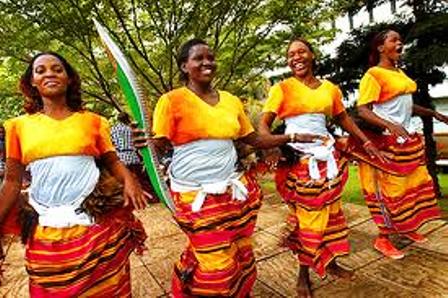
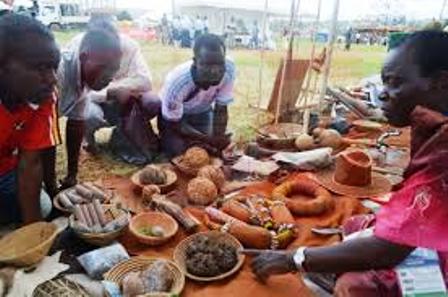
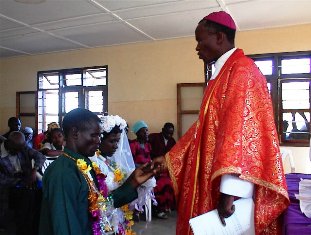
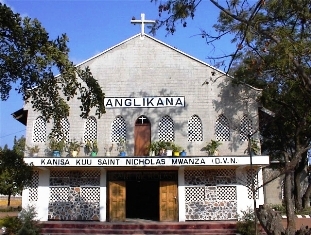
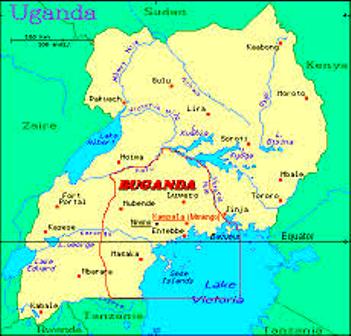
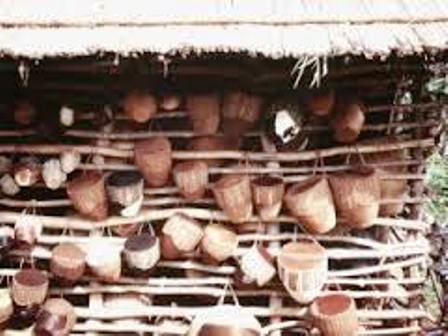
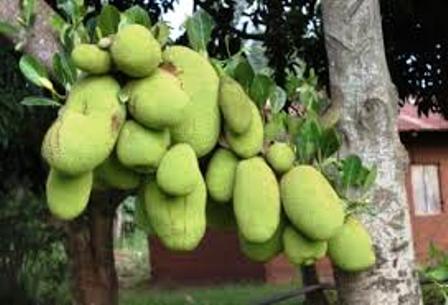







New! Comments
Have your say about what you just read! Leave me a comment in the box below.